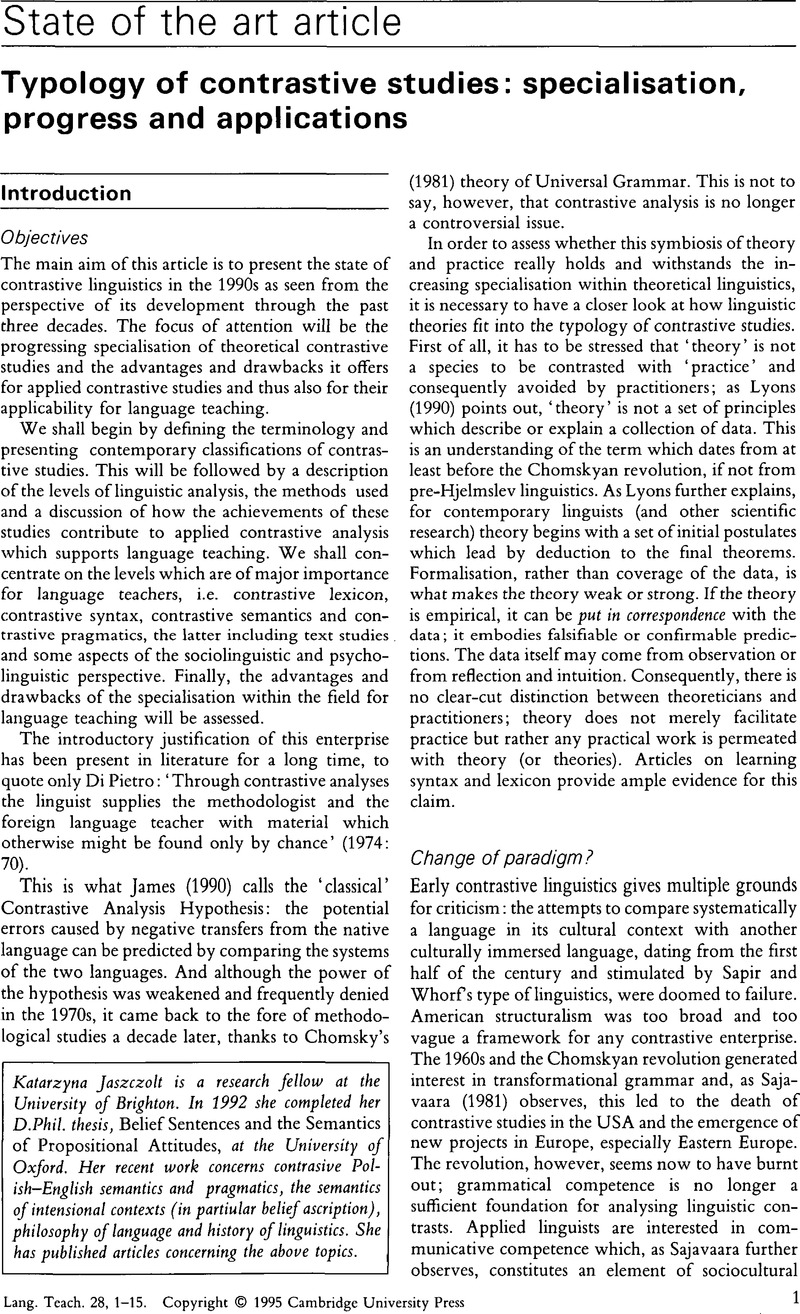Crossref Citations
This article has been cited by the following publications. This list is generated based on data provided by Crossref.
1996.
Introduction.
Language Sciences,
Vol. 18,
Issue. 1-2,
p.
1.
Haded, Mohamed S.
1998.
The Merits of Exploiting Error Analysis in Foreign Language Teaching and Learning.
RELC Journal,
Vol. 29,
Issue. 1,
p.
55.
Ying, H.G.
2000.
The origin of contrastive rhetoric revisited.
International Journal of Applied Linguistics,
Vol. 10,
Issue. 2,
p.
259.
RONEL O. Laranjo
and
Seong-Chul Shin
2016.
Patterns of Errors in Compositions of Korean Learners of Filipino Language.
The Southeast Asian Review,
Vol. 26,
Issue. 4,
p.
365.



